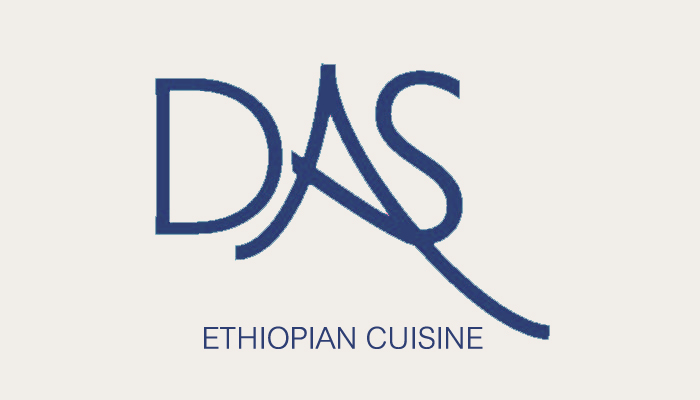I have always had an affection for blunt flavors. Flavors that grab hold of you and threaten to overwhelm only to rescind before the figurative redline. Though every cuisine and kitchen has a dish or two that mimic this experience, there are few that base the entirety of their depth on this concept, with Ethiopian being one such fare. A culinary tour-de-force that is highly underrated, Ethiopian food hits your senses like a brick; its complex integration of spices and seasoning rivaled only by its ability to fill you up.
Originally called Zed’s, Das Ethiopian Cuisine is a bit out of place in Georgetown. Not so much the décor, which is right at home and offers unpretentious outside seating, but more so the food on offer. Despite being more at home on U Street, Das provides a welcome change of pace from the other, more traditional restaurants found on M street. Nonetheless, Das carries on the tradition started by Zed Wondemu by providing the same delicious array of Ethiopian classics that made the original Zed’s one of the most successful woman-owned restaurants in Washington D.C.
A safe assumption would be that most people who go to Das Ethiopian Cuisine have no idea or no knowledge of what is actually on the menu. As one of these people, I decided to order a vegetarian entrée sampler in a feeble attempt to make sure nothing was missed. Brought on a large white tray covering with traditional Ethiopian Injera (a yeast-risen flatbread with a unique, slightly spongy texture made out of teff flour) the platter contained the following dishes:
- Ethiopian Harvest Vegetable Specialty: Cauliflower, string beans and carrots simmered in stewed tomatoes
- Split Pea Kik Alicha: Puree of yellow split peas mixed with onions, green peppers, and garlic
- Red Lentil Miser Watt: Red lentils spiced with berbere (red pepper) sauce
- Collard Greens Gomen: Collard greens mixed with onion and garlic
- Cabbage with Carrots in Sauce Tikile Gomen: Cabbage and carrots flavored with ginger and garlic
One of the distinct pleasures of Ethiopian food is the way in which you eat it. No forks, no knives, the use of hands is the only appropriate way. Breaking off a piece of Injera to then scoop up the desirable portion is primordial and immediately gratifying. Moreover, any sort of unease you had regarding the experience is wiped away once your animalistic tendencies take over.
Each dish has a definitive weight to them. The red lentils were cooked in such a way that the flavor resembled that of ground meat. Thickened by the red pepper sauce and mushed into a consistency that was smooth one moment and chunky another, the red lentils were appealing but only in small tidbits. Adding Injera to the mix quelled the underlying heat of the dish slightly but not enough to make you forget the sauce.
The puree of yellow split peas was tame compared to the red lentils. Holding its own as a milder dish, the peas played second fiddle to the trifecta that was the onions, green peppers, and garlic. The distinct aromatic qualities of each was held in check by the peas but in return nullified whatever taste the peas had. After the sweet undertone of the red lentils and yellow peas, the collard greens with onion and garlic was a complete 180. Revitalizing, if not slightly bitter, the collard greens were a perfect match for the sour Injera. Moreover, the juxtaposition created by the bitterness and tanginess of the collard greens was an appropriate evolution after the red lentils/yellow peas partnership.
Carrying on the precedents set by the collard greens, the cabbage with carrots flavored with ginger and garlic provided an entirely new aspect to the concept of bitterness. Using the one-dimensional flavor of the cabbage as the base, the ginger and garlic created a one-two punch that sucked you in with the smooth traces of ginger and moved you along with the sharper garlic.
The best part of the vegetarian platter was the cauliflower, string beans, and carrots dish. The simplest of the dishes, the inclusion of stewed tomatoes elevated the other ingredients to another level. Paired with the Injera, every bite was soft with the crisp string beans and carrots coming into the fray immediately. The tomatoes gave the dish some weight that was otherwise lacking but more importantly provided a distinct tang that brought the entire platter together.
Consequently, Ethiopian food is not for everyone. Its flavor and different dimensions may be too much for some to handle. But regardless, its genius; the way in which familiar ingredients are reinvented through simple applications is unrivaled. Das may not be the best Ethiopian restaurant in Washington D.C. but it serves as a fantastic introduction to those willing to try something new.
–Amendment202
http://www.clotureclub.com/2011/06/eating-dc-das-ethiopian-cuisine/


